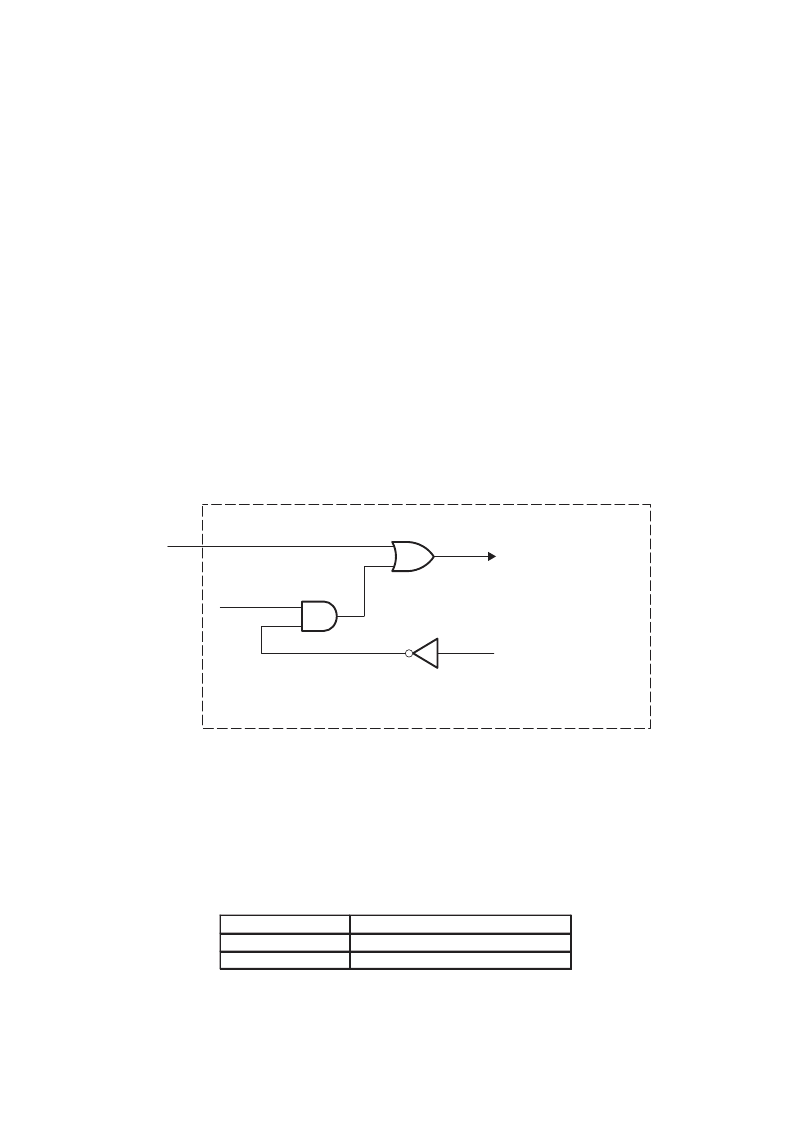- 您現(xiàn)在的位置:買賣IC網(wǎng) > PDF目錄384010 > TLV320AIC11I (Texas Instruments, Inc.) General-Purpose Low-Voltage 1.1V to 3.6V/0 16-bit 22-KSPS DSP CODEC PDF資料下載
參數(shù)資料
| 型號: | TLV320AIC11I |
| 廠商: | Texas Instruments, Inc. |
| 元件分類: | Codec |
| 英文描述: | General-Purpose Low-Voltage 1.1V to 3.6V/0 16-bit 22-KSPS DSP CODEC |
| 中文描述: | 通用低電壓1.1V至3.6V的/ 0 16位22 kSPS的DSP的解碼器 |
| 文件頁數(shù): | 30/55頁 |
| 文件大小: | 263K |
| 代理商: | TLV320AIC11I |
第1頁第2頁第3頁第4頁第5頁第6頁第7頁第8頁第9頁第10頁第11頁第12頁第13頁第14頁第15頁第16頁第17頁第18頁第19頁第20頁第21頁第22頁第23頁第24頁第25頁第26頁第27頁第28頁第29頁當前第30頁第31頁第32頁第33頁第34頁第35頁第36頁第37頁第38頁第39頁第40頁第41頁第42頁第43頁第44頁第45頁第46頁第47頁第48頁第49頁第50頁第51頁第52頁第53頁第54頁第55頁

3–2
3.2
Secondary Serial Communication
Secondary serial communication is used to read or write 16-bit words that program both the options and the circuit
configurations of the device. Register programming always occurs during secondary communication. Four primary
and secondary communication cycles are requested to program the four registers. If the default value for a particular
register is desired, then the register addressing can be omitted during secondary communications. The NOOP
command addresses a pseudo-register (register 0), and no register programming takes place during this secondary
communication. If secondary communication is desired for any device (either master or slave), then a secondary
communication must be requested for all devices, starting with the master. This results in a secondary frame-sync
(FS) for all devices. The NOOP command can be used for devices that do not need a secondary operation.
During a secondary communication, a register can be written to or read from. When writing to a register, DIN contains
the value to be written. The data returned on DOUT is + 0000000000000 (3-bit device address).
There are two methods of initiating a secondary communication, as illustrated in Figure 3–2:
Asserting a high level on FC (hardware request)
Asserting the LSB of the DIN 16-bit serial communication high while in the 15-bit mode (software request)
NOTE:
The secondary communication request should not be asserted during the first two samples
after power up.
FC
(Hardware)
16-Bit Mode
(Control 1 Register, D0)
Internal TLV320AIC11
(LSB of DIN)
Secondary Request
Figure 3–2. Hardware and Software Secondary Communication Request
Pulling FC high causes the start of the secondary communication’s 128 or 256 SCLKs (see Figures 2–2 and 2–4)
after the start of the primary communication frame, depending on the number of devices in cascade.
The second method to initiate a secondary communication is asserting the LSB high. A software request is typically
used when the request resolution of the DAC channel is less than 16 bits. Then the least significant bit (D0) can be
used for secondary requests, as shown in Table 3–1. The request is made by placing the device in the 15-bit DAC
mode and making the LSB of DIN high. All devices should be in 15-bit DAC mode, and secondary communication
should be requested for all devices.
Table 3–1. Least Significant Bit Control Function
CONTROL BIT D0
CONTROL BIT FUNCTION
0
No operation (NOOP)
1
Secondary communication request
相關(guān)PDF資料 |
PDF描述 |
|---|---|
| TLV320AIC34_1 | FOUR-CHANNEL, LOW-POWER AUDIO CODEC FOR PORTABLE AUDIO/TELEPHONY |
| TLV3701CDBV | FAMILY OF NANOPOWER PUSH-PULL OUTPUT COMPARATORS |
| TLV3701IDBV | FAMILY OF NANOPOWER PUSH-PULL OUTPUT COMPARATORS |
| TLV5510INS | 2.7-V TO 3.6-V 8-BIT HIGH-SPEED ANALOG-TO-DIGITAL CONVERTER |
| TLV5535PW | 8-BIT, 35 MSPS, LOW-POWER ANALOG-TO-DIGITAL CONVERTER |
相關(guān)代理商/技術(shù)參數(shù) |
參數(shù)描述 |
|---|---|
| TLV320AIC11IPFB | 功能描述:接口—CODEC Gen Purp Lo-I/O Vltg 16-Bit 22-KSPS DSP RoHS:否 制造商:Texas Instruments 類型: 分辨率: 轉(zhuǎn)換速率:48 kSPs 接口類型:I2C ADC 數(shù)量:2 DAC 數(shù)量:4 工作電源電壓:1.8 V, 2.1 V, 2.3 V to 5.5 V 最大工作溫度:+ 85 C 安裝風(fēng)格:SMD/SMT 封裝 / 箱體:DSBGA-81 封裝:Reel |
| TLV320AIC11IPFBG4 | 功能描述:接口—CODEC 12-Bit To 24-Bit Reg Bus Exchg W/3-St Otp RoHS:否 制造商:Texas Instruments 類型: 分辨率: 轉(zhuǎn)換速率:48 kSPs 接口類型:I2C ADC 數(shù)量:2 DAC 數(shù)量:4 工作電源電壓:1.8 V, 2.1 V, 2.3 V to 5.5 V 最大工作溫度:+ 85 C 安裝風(fēng)格:SMD/SMT 封裝 / 箱體:DSBGA-81 封裝:Reel |
| TLV320AIC11PFB | 制造商:TI 制造商全稱:Texas Instruments 功能描述:General-Purpose Low-Voltage 1.1V to 3.6V/0 16-bit 22-KSPS DSP CODEC |
| TLV320AIC12 | 制造商:TI 制造商全稱:Texas Instruments 功能描述:PRODUCT NOTIFICATION |
| TLV320AIC12_07 | 制造商:TI 制造商全稱:Texas Instruments 功能描述:LOW-POWER, HIGHLY-INTEGRATED, PROGRAMMABLE 16-Bit, 26-KSPS MONO CODEC |
發(fā)布緊急采購,3分鐘左右您將得到回復(fù)。